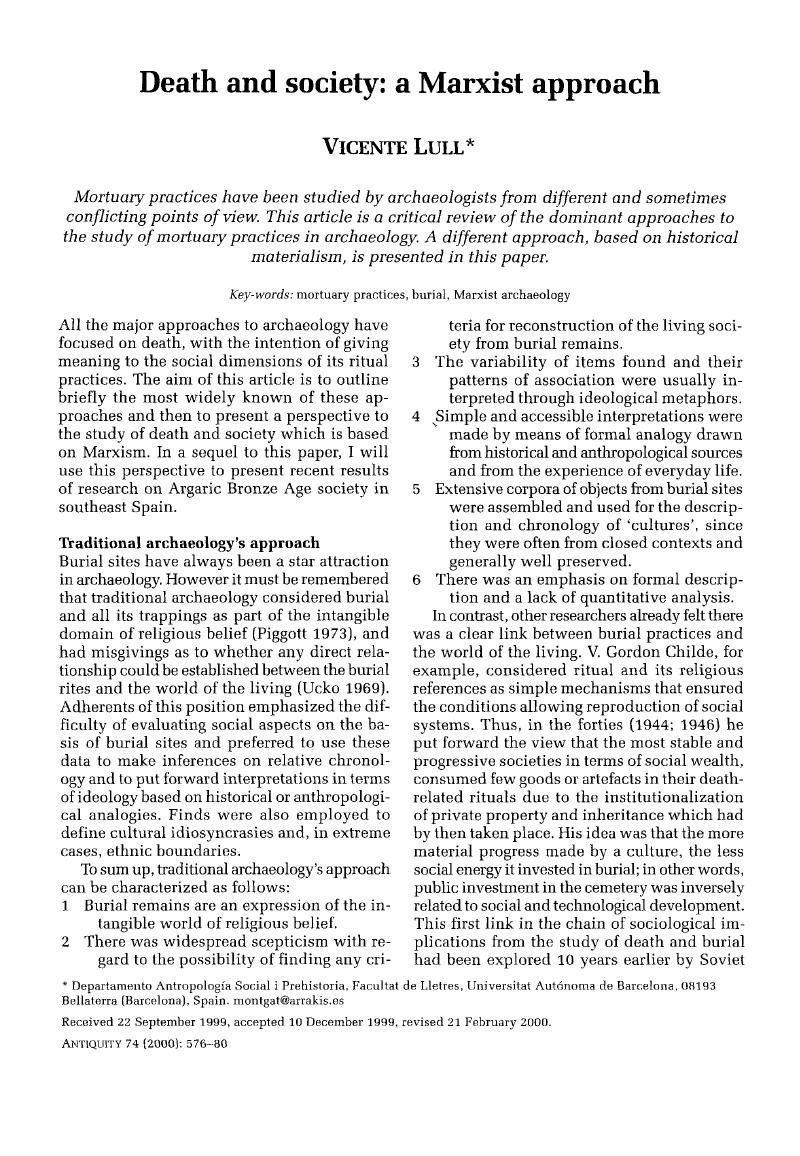Crossref Citations
This article has been cited by the following publications. This list is generated based on data provided by Crossref.
Lull, Vicente
Pérez, Rafael Micó
Herrada, Cristina Rihuete
and
Risch, Roberto
2005.
Property Relations in the Bronze Age of South-western Europe: an Archaeological Analysis of Infant Burials from El Argar (Almeria, Spain).
Proceedings of the Prehistoric Society,
Vol. 71,
Issue. ,
p.
247.
Gazzoni, V.
and
Fontana, F.
2011.
Quelle mort ? Quelle vie ? Pratiques funéraires et organisation sociale des chasseurs-cueilleurs de la péninsule italienne.
Bulletins et mémoires de la Société d'anthropologie de Paris,
Vol. 23,
Issue. 1-2,
p.
52.
Blin, Arnaud
2015.
Mortuary Practices as Evidence of Social Organization in the Neolithic Hypogea of the Paris Basin.
European Journal of Archaeology,
Vol. 18,
Issue. 4,
p.
580.
Rakita, Gordon F. M.
2018.
The Encyclopedia of Archaeological Sciences.
p.
1.
Finneran, Niall
and
Welch, Christina
2020.
Barbadian Gothic: The Moving Coffins of the Chase Vault in Socio-Cultural Context.
Folklore,
Vol. 131,
Issue. 1,
p.
55.
Argüello García, Pedro María
2020.
Cambios en las prácticas funerarias prehispánicas en el altiplano Cundiboyacense (centro de Colombia) desde el periodo Precerámico al Muisca Tardío. Un análisis exploratorio.
Boletín de Antropología,
Vol. 35,
Issue. 60,
p.
40.
Augereau, Anne
2022.
In search of the origin of inequalities: Gender study and variability of social organization in the first farmers societies of western Europe (Linearbandkeramik culture).
Journal of Anthropological Archaeology,
Vol. 66,
Issue. ,
p.
101413.
Sánchez Hastamorir, Marlon A.
Argüello García, Pedro M.
and
Rojas-Sepúlveda, Claudia M.
2023.
Diferenciación social y condiciones de vida en el Cercado Grande de los Santuarios (2350-450 aP), un centro político y ritual en el Altiplano Cundiboyacense, Colombia.
Latin American Antiquity,
Vol. 34,
Issue. 2,
p.
404.
Milevski, Ianir
2023.
“And in Length of Days Understanding” (Job 12:12).
p.
113.
Staines, Zoe
Smith, Kiah
Plage, Stefanie
Lata, Lutfun Nahar
Fay, Suzanna
Zheng, Zhaoxi
Reeves, Laura Simpson
Beazley, Helen
Kuskoff, Ella
Clarke, Andrew
McGowan, Glenys
Shevellar, Lynda
and
Prangnell, Jonathan
2024.
Social science as social action to address inequalities.
Australian Journal of Social Issues,
Vol. 59,
Issue. 1,
p.
108.
Muller, Stephen
2024.
Representations of childness: the memorialisation of children in the Australian cemetery 1836 – 2018.
Mortality,
Vol. 29,
Issue. 3,
p.
531.



